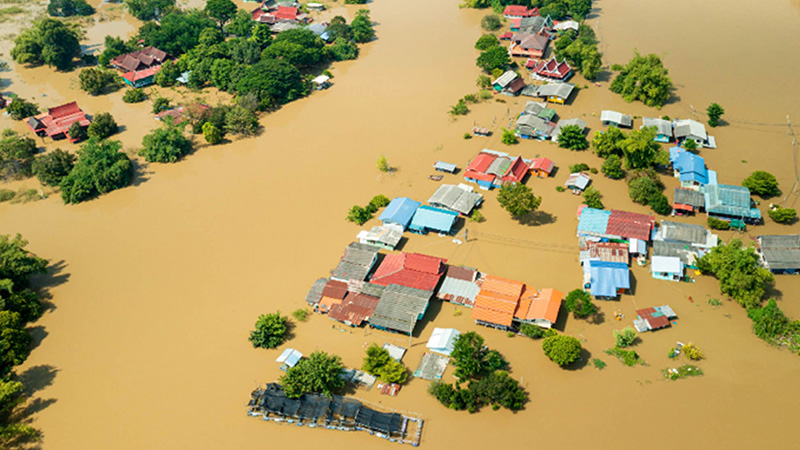Evaluating Climate Impacts
Teacher Resources
Driving Question: How will climate change affect us?
To address the impacts of climate change, we first need to understand them. Explore how climate change is affecting both natural and human systems around the world, but to different extents depending on region and community.
Learning Objectives:
- Distinguish between the direct and indirect impacts of climate change.
- Understand that the impacts on natural and human systems are connected.
- Assess how the impacts of climate change are experienced differently
Vocab Terms:
- climate model
- direct impacts
- indirect impacts
- methane
- scale
Opener: Evaluating Climate Impacts
To teach this lesson step, refer to page 3 of Lesson 2.1 Teaching Guide.
Our Openers and Closers Guide will provide more information about these short, but important, activities at the beginning and end of each lesson.
New to teaching about climate change? Join our online teacher community.
We all experience the impacts of climate change in different ways. How is climate change impacting you?
Current and Future Climate Effects
To teach this lesson step, refer to page 3 of Lesson 2.1 Teaching Guide.
In this post in the online teacher community, teachers discuss climate change in their community.
Climate change is here, and future generations are likely to feel its effects more and more intensely. What can we expect both now and in the future? First, watch the video to explore climate change impacts, and then use the activity to think about how you may be effected.
-
Guiding Questions
-
Before you watch
Preview the questions below and review the transcript.
While you watch
Look for answers to these questions:
- Why are small amounts of warming significant when it comes to climate?
- How are extreme weather events connected to climate change?
- How do climate models contribute to our understanding of climate impacts?
- What are the “ripple effects” of climate change?
- What’s a feedback loop?
After you watch
Respond to this question: Why is it important to understand and evaluate the interconnection between climate impacts?
Key Ideas
Understanding Climate Impacts
To teach this lesson step, refer to page 5 of Lesson 2.1 Teaching Guide.
Check out our Reading Guide to learn about the Three-Step Reading approach.
We know that the impacts of climate change are negative—what’s the point of sorting them into categories? Read the article to explore both direct and indirect impacts, and then use the activity to understand how this classification can help us better address climate change.
-
Guiding Questions
-
Before you read
Preview the questions below, and then skim the article. Be sure to look at the section headings and any images.
While you read
Look for answers to these questions:
- What is the difference between direct and indirect impacts of climate change?
- What is the relationship between climate change and natural disasters?
- How can direct impacts of climate change lead to indirect impacts?
- How can we minimize the direct impacts of climate change?
- How can we minimize the indirect impacts of climate change?
After you read
Respond to this question: Do you think it’s important to differentiate between direct and indirect impacts? Why or why not?
Climate Impacts Case Study
To teach this lesson step, refer to page 7 of Lesson 2.1 Teaching Guide.
How is climate change impacting people in other parts of the world? These profiles and the accompanying activity will help you gain a deeper understanding of climate change and the connection between direct and indirect impacts.
Closer: Evaluating Climate Impacts
To teach this lesson step, refer to page 8 of Lesson 2.1 Teaching Guide.
Using your own experiences, explore how a direct impact can cause a ripple effect of indirect impacts.







